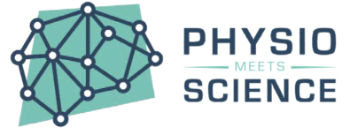
Infographik: Belastung und Gewebe
Welche Gewebe des menschlichen Körpers werden stärken, wenn man sie belastet?
- Muskeln
Es ist kein Geheimnis, dass Muskeln umso dicker werden, je mehr man sie belastet (11, 12). Sogar dann, wann man sie passiv durch Stretching beansprucht (16) - Knochen
Knochen werden stärker, wenn sie unter Druck gesetzt werden (18). Krafttraining mit hoher Belastung verbessert nachweislich die Knochendichte bei postmenopausalen Frauen (13, 14, 15) - Sehnen
Training mit Belastung erhöht die Qualität und Dicke von Sehnen (3,5) - Bänder
Gewichthebern haben belastungsbedingt ein deutlich dickeres vorderes und hinteres Kreuzband (4) - Knorpel
Training verbessert die Qualität des Gelenkknorpels (6). Laufen ist selbst bei Menschen mit Arthrose sicher und reduziert Schmerzen (8). Sogar Marathonläufer haben eine geringe Arthrose-Rate als die Allgemeinbevölkerung (10) - Bandscheiben
Läufer haben dickere Bandscheiben als Nichtläufer gleichen Alters (1,2).
Auch intensives Radfahren kräftigt die Bandscheibe (17)
Um einen robusten Körper zu bekommen, müssen Sie ihn progressiv belasten. Schonung kann das nicht!
Literaturangaben
Primärquelle: Anthony Halimi @ Trust me, I’m a Physiotherapist
- Belavý, Daniel L.; Albracht, Kirsten; Bruggemann, Gert-Peter; Vergroesen, Pieter-Paul A.; van Dieën, Jaap H. (2016): Can Exercise Positively Influence the Intervertebral Disc? In: Sports medicine (Auckland, N.Z.) 46 (4), S. 473– DOI: 10.1007/s40279-015-0444-2.
- Belavý, Daniel L.; Quittner, Matthew J.; Ridgers, Nicola; Ling, Yuan; Connell, David; Rantalainen, Timo (2017): Running exercise strengthens the intervertebral disc. In: Scientific reports 7, S. 45975. DOI: 10.1038/srep45975.
- Bohm, Sebastian; Mersmann, Falk; Arampatzis, Adamantios (2015): Human tendon adaptation in response to mechanical loading: a systematic review and meta-analysis of exercise intervention studies on healthy adults. In: Sports medicine – open 1 (1), S. 7. DOI: 10.1186/s40798-015-0009-9.
- Grzelak, Piotr; Podgorski, Micha?; Stefanczyk, Ludomir; Krochmalski, Marek; Domzalski, Marcin (2012): Hypertrophied cruciate ligament in high performance weightlifters observed in magnetic resonance imaging. In: International orthopaedics 36 (8), S. 1715–1719. DOI: 10.1007/s00264-012-1528-3.
- Grzelak, P.; Polguj, M.; Podgórski, M.; Majos, A.; Krochmalski, M.; Dom?alski, M. (2012): Patellar ligament hypertrophy evaluated by magnetic resonance imaging in a group of professional weightlifters. In: Folia morphologica 7 (4), S. 240–244.
- Koli, Jarmo; Multanen, Juhani; Kujala, Urho M.; Häkkinen, Arja; Nieminen, Miika T.; Kautiainen, Hannu et al. (2015): Effects of Exercise on Patellar Cartilage in Women with Mild Knee Osteoarthritis. In: Medicine and science in sports and exercise 47 (9), S. 1767–1774. DOI: 10.1249/MSS.0000000000000629.
- Lo, Grace H.; Driban, Jeffrey B.; Kriska, Andrea M.; McAlindon, Timothy E.; Souza, Richard B.; Petersen, Nancy J. et al. (2017): Is There an Association Between a History of Running and Symptomatic Knee Osteoarthritis? A CrossSectional Study From the Osteoarthritis Initiative. In: Arthritis care & research 69 (2), S. 183–191. DOI: 10.1002/acr.22939.
- Lo, Grace H.; Musa, Sarra M.; Driban, Jeffrey B.; Kriska, Andrea M.; McAlindon, Timothy E.; Souza, Richard B. et al. (2018): Running does not increase symptoms or structural progression in people with knee osteoarthritis: data from the osteoarthritis initiative. In: Clinical rheumatology 37 (9), S. 2497–2504. DOI: 10.1007/s10067-018-4121-3.
- Miller, Ross H. (2017): Joint Loading in Runners Does Not Initiate Knee Osteoarthritis. In: Exercise and sport sciences reviews 45 (2), S. 87–95. DOI: 10.1249/JES.0000000000000105.
- Ponzio, Danielle Y.; Syed, Usman Ali M.; Purcell, Kelly; Cooper, Alexus M.; Maltenfort, Mitchell; Shaner, Julie; Chen, Antonia F. (2018): Low Prevalence of Hip and Knee Arthritis in Active Marathon Runners. In: The Journal of bone and joint surgery. American volume 100 (2), S. 131–137. DOI: 10.2106/JBJS.16.01071.
- Schoenfeld, Brad J.; Contreras, Bret; Krieger, James; Grgic, Jozo; Delcastillo, Kenneth; Belliard, Ramon; Alto, Andrew (2019): Resistance Training Volume Enhances Muscle Hypertrophy but Not Strength in Trained Men. In: Medicine and science in sports and exercise 51 (1), S. 94–103. DOI: 10.1249/MSS.0000000000001764.
- Schoenfeld, Brad J.; Ogborn, Dan; Krieger, James W. (2017): Dose-response relationship between weekly resistance training volume and increases in muscle mass: A systematic review and meta-analysis. In: Journal of sports sciences 35 (11), S. 1073–1082. DOI: 10.1080/02640414.2016.1210197.
- Watson, S. L.; Weeks, B. K.; Weis, L. J.; Horan, S. A.; Beck, B. R. (2015): Heavy resistance training is safe and improves bone, function, and stature in postmenopausal women with low to very low bone mass: novel early findings from the LIFTMOR trial. In: Osteoporosis international : a journal established as result of cooperation between the European Foundation for Osteoporosis and the National Osteoporosis Foundation of the USA 26 (12), S. 2889– DOI: 10.1007/s00198-015-3263-2.
- Watson, Steven L.; Weeks, Benjamin K.; Weis, Lisa J.; Harding, Amy T.; Horan, Sean A.; Beck, Belinda R. (2018): High-Intensity Resistance and Impact Training Improves Bone Mineral Density and Physical Function in Postmenopausal Women With Osteopenia and Osteoporosis: The LIFTMOR Randomized Controlled Trial. In: Journal of bone and mineral research : the official journal of the American Society for Bone and Mineral Research 33 (2), S. 211–220. DOI: 10.1002/jbmr.3284.
- Watson, S. L.; Weeks, B. K.; Weis, L. J.; Harding, A. T.; Horan, S. A.; Beck, B. R. (2019): High-intensity exercise did not cause vertebral fractures and improves thoracic kyphosis in postmenopausal women with low to very low bone mass: the LIFTMOR trial. In: Osteoporosis international : a journal established as result of cooperation between the European Foundation for Osteoporosis and the National Osteoporosis Foundation of the USA. DOI 10.1007/s00198-018-04829-z.
- Wilson, Samantha J.; Christensen, Bryan; Gange, Kara; Todden, Christopher; Hatterman-Valenti, Harlene; Albrecht, Jay M. (2018): Chronic Stretching During 2 Weeks of Immobilization Decreases Loss of Girth, Peak Torque, and Dorsiflexion Range of Motion. In: Journal of sport rehabilitation, S. 1–5. DOI: 10.1123/jsr.2017-0101.
- Belavy, Daniel L.; Quittner, Matthew; Ridgers, Nicola D.; Ling, Yuan; Connell, David; Trudel, Guy; Rantalainen, Timo (2019): Beneficial Intervertebral Disc and Muscle Adaptations in High-Volume Road Cyclists. In: Medicine and science in sports and exercise 51 (1), S. 211–217. DOI: 10.1249/MSS.0000000000001770.
- Daly, Robin M.; Dalla Via, Jack; Duckham, Rachel L.; Fraser, Steve F.; Helge, Eva Wulff (2018): Exercise for the prevention of osteoporosis in postmenopausal women: an evidence-based guide to the optimal prescription. In: Brazilian journal of physical therapy. DOI: 10.1016/j.bjpt.2018.11.011.
